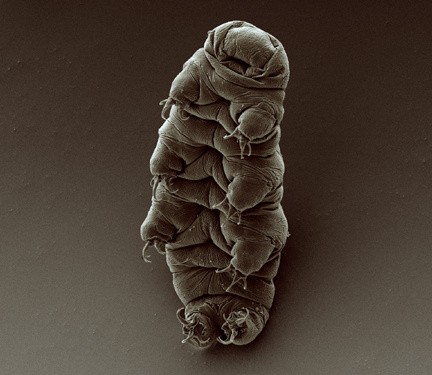Survival is one of the most basic yet fundamental mechanisms that all living organisms do to preserve their species. However, there are instances where survival is not possible in the case of an extinction-level event. With this, it is important to mention the potential survivors in case a nuclear war happens.
Some animals are known to possess physical characteristics and biological features that allow them to escape from predators or even withstand harsh environments-even radiation from nuclear fallout.
Early 2022 has shown that nuclear war is one of the threats that can be a reality, especially after Russia invaded Ukraine on February 24.
With regional tensions and political threats to likely fail decades of nuclear deterrence, humans are at risk-but not for some bacteria, fish, insects, arthropods, or microscopic organisms that are likely to still live even in our absence.
Below are seven animals that are likely to survive in case of a nuclear war:
1. Tardigrade

Tardigrades are famously known for their resemblance to some large animals of today. This eight-legged microscopic animal is tough as it looks. Also called 'water bears' or 'moss piglets,' scientists have claimed that tardigrades can withstand both extremely hot and cold temperatures.
According to NBC News, tardigrades have been used for widespread scientific research since they can survive harsh environments. Depicted as nearly indestructible, water bears are said to survive inside a pot of boiling water or even in the vacuum of space.
2. Cockroach
You see them in your closet, your ceiling, or even on the streets, cockroaches are known for their reputation as invasive home pests. However, a cockroach is indeed one of the candidates that can survive during a nuclear fallout.
Cockroaches have been around for more than 300 million years and are considered to be one of the oldest insects in the world. They have roamed the planet long before humans, and roaches will likely be here for a long time, as per the Smithsonian Magazine.
3. Scorpion
Scorpions are one of the sturdiest animals on the planet. Various research has shown that these six-legged arachnids can take high levels of ultraviolet (UV) radiation from the sun. It is likely they can also survive the theoretical nuclear winter.
4. Fruit Fly
Fruit flies are also evidently able to survive the heat from a nuclear explosion. In a study conducted by researchers from the Moscow Institute of Physics and Technology, as cited by Science Daily, it was found that even weak doses of gamma radiation can prolong the life of fruit flies.
5. Braconid Wasp
The parasitic braconid wasps are known for laying their eggs on caterpillars and worms, as well as plants. They are also known for withstanding almost 20 times the radiation level of the Hiroshima bomb during World War II.
An experiment reportedly had to use 180,000 rads to kill a braconid. Therefore, it is no wonder that it can survive a potential nuclear war.
6. Mummichog
Mummichogs, also called Atlantic killfish, are tiny marine fry that can adapt to their environment, including surviving from a high amount of radiation in the water. These fish reside in the Atlantic Ocean coastal areas of the United States and Canada.
According to NASA, two mummichog fish were sent to space on the Skylab as part of an experiment in the 1970s. The small fish was chosen as a candidate for their unique adaptive capabilities. After being flown into the vacuum of nothingness, the fish were seen still swimming in a circular pattern.
7. Deinococcus Radidurans
Even the Guinness Book of World Records has reportedly listed the microscopic bacteria Deinococcus Radidurans as the "world's toughest bacterium" since it can withstand extreme temperatures and even dehydration. There is no known limit of radiation level that the bacteria can take.
© 2026 NatureWorldNews.com All rights reserved. Do not reproduce without permission.





